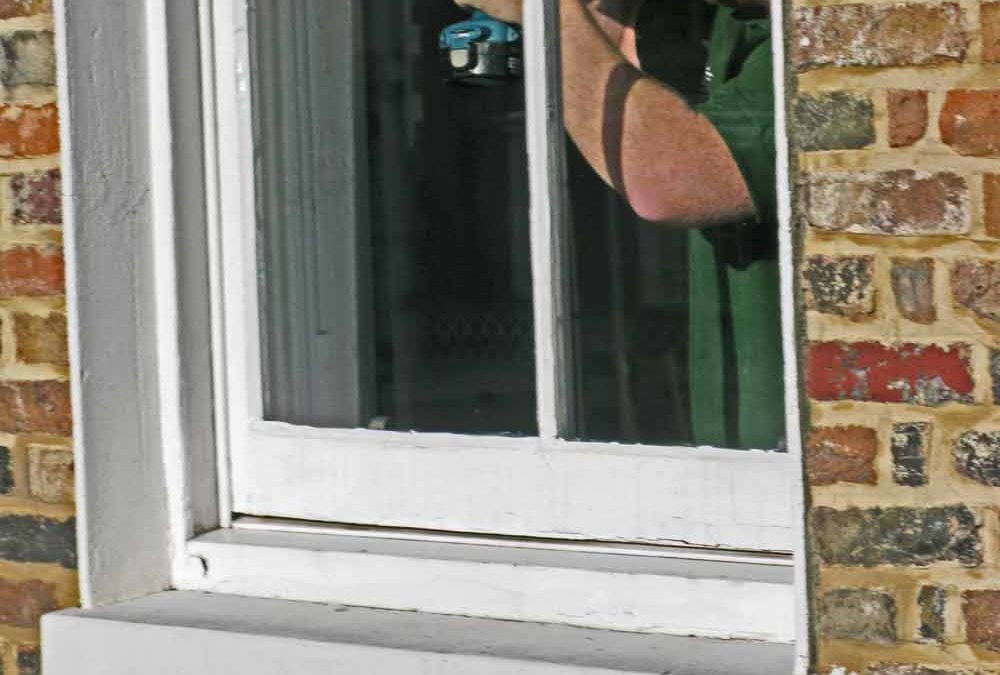In this new series, Chartered Surveyor Ian Rock FRICS – Author of the Haynes Home insulation Manual – explains how to cut your energy bills by boosting your home’s thermal efficiency.
12a:
Cutting Heat Loss Through Windows – Part 2
Double Glazing or Triple Glazing? Or Secondary Glazing?
Here we continue last month’s blog about stemming tour home’s loss of heat through the windows. But it’s not all about the glazing – the choice and design of window frames also plays a role.
Choosing window frames
When it comes to selecting the type of window frames these are the main options for materials:-
* Timber frames offer economy but require periodic maintenance, although they’re relatively adaptable and easy to adjust over the longer-term. Visually timber is generally considered the best option, particularly for older properties. Recent improvements have been made to restrict the ingress of rain and to enhance durability.
* UPVC also offers economy and good performance plus minimal maintenance, but has higher environmental impacts associated with disposal and manufacturing. Also their lifespan is considerably shorter than is generally imagined, vulnerable to the effects of UV light that over time can cause discoloration and brittleness.
* Aluminium framed windows tend to be more costly but can potentially offer long life and low maintenance; but because of their conductivity it’s especially important they incorporate an effective thermal break between the glass and the metal.
Thermal bridging
When new high performance windows are installed in existing homes, there’s a danger of excessive heat loss around the edges of the openings – at the heads, sills and reveals. In most properties there will be virtually zero insulation at these points, with a consequent risk of cold bridging across. To make matters worse, lintels are commonly of cold steel or concrete, and until quite recently in new construction reveals were simply ‘closed off’ around openings using brick or blockwork.
When new windows are being installed significant improvements can be made to reduce cold bridging. Once the existing window frames have been removed and the wall reveals exposed, the cavity opening (between the inner and outer leaves of the wall) should be sealed, as is done in new construction, by squashing a strip of insulated cavity closer material into the end. Then once the new units are in place, with the reveals insulated with an airtight surface, it should significantly reduce the extent of cold surfaces, and hence the risk of thermal bridging and condensation.
Window options
There are 3 main options when it comes to improving the thermal efficiency of windows:-
- Overhaul the existing windows
Refurbishing and draught-proofing the existing windows is normally the least expensive option. Many older timber windows were of very high quality and can provide many years more service with an overhaul. There are a number of specialist firms who can provide this service.
Performance can then be significantly boosted by fitting good quality secondary glazing, at an overall cost about half that of replacement windows. Although secondary glazing can traditionally achieve only about 60% of the performance of replacements, with potentially less convenience in terms of opening, high performance systems are now available that are a match for double glazing (see below).
- Replace just the glazing
Where windows need to be retained (e.g. in Conservation Areas) one option is to leave the original frames intact and replace the old glazing with higher-performance units fitting into the existing rebates. Combined with a spot of draught-proofing around the frames and opening lights this should achieve significant energy efficiency improvements. Where frames are retained with just the glazing replaced, it doesn’t constitute a ‘controlled fitting’ and is therefore not covered by Building Regulations. This is an ideal option where the existing sealed double glazed units have misted up and failed but the timber frames are still sound,
- Replacement windows
Complete replacement is the most popular option, as well as usually being the most expensive. As noted earlier, window installation work must comply with the Building Regulations and must meet a minimum performance standards. Ideally replacing the windows should be co-ordinated with any scheduled wall insulation works. Specifying wider frames or repositioning the new windows can permit a greater depth of insulation around the edges at the reveals, thereby reducing thermal bridging.
Secondary glazing
Secondary glazing provides a relatively simple and inexpensive method of reducing heat loss by fitting an extra layer of glass to the room-side of your existing windows. Because it works independently, the original windows can remain in place and needn’t be altered, so there’s little or no change to a building’s appearance – ideal for Listed buildings or those in Conservation Areas.
Secondary glazing should be virtually maintenance-free apart from occasional dusting, and the operation of curtains and blinds should be unaffected.
There are various systems designed to integrate with the existing windows. Frames can be discreetly concealed when viewed from the outside whilst remaining reasonably unobtrusive internally. Most systems are fitted with hinges so they can be opened for cleaning and ventilation. Alternatively they can be designed to slide and integrated into sash windows, or can be fixed in place (but taken down during the summer).
The type of glazing can vary from standard 4mm float glass (plain or obscure) to toughened safety glass, and even the latest high performance ‘low-E’ double glazing or sound-deadening acoustic glass.
Secondary glazing is also a much better sound insulator than double glazing thanks to the much larger gap between the panes. Sound insulation of up to 45dBA can typically be achieved, with even better levels as the gap becomes wider particularly if the reveals are lined with an acoustic material.
Thermal performance
Those who remember cheap DIY kits comprising polythene sheets that needed to be stretched into shape with the aid of a hairdryer may be surprised to learn that today’s sophisticated systems can achieve remarkably effective results.
Although there are no specific requirements for secondary glazing in the Building Regulations secondary glazing can actually match the performance target for new replacement windows fitted to existing homes. The figure of 2.0W/ m²K can be achieved in combination with the existing window if low-E coated glass is used, reducing heat loss through the window by more than 60%.
NEXT MONTH: Why your doors may be topping the heat loss charts!
Ian Rock’s home insulation tips are taken from the new Haynes Home Insulation Manual. For further information see www.home-insulating.com







